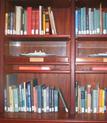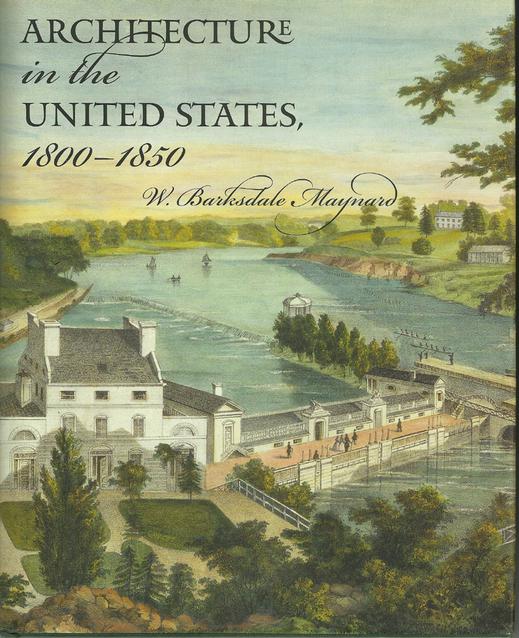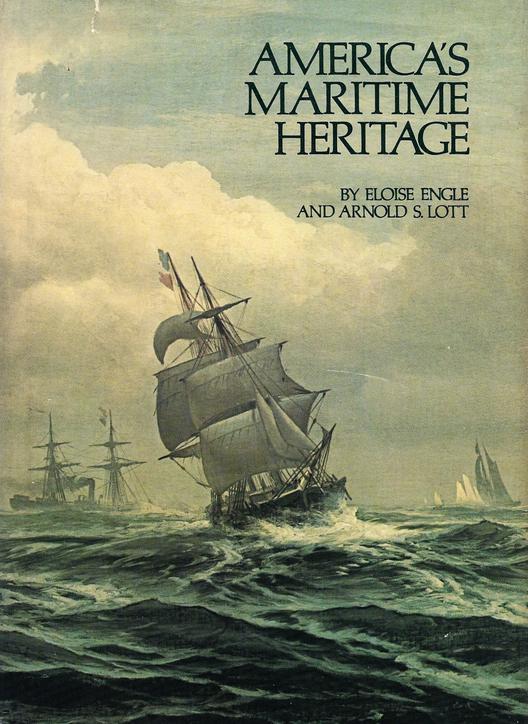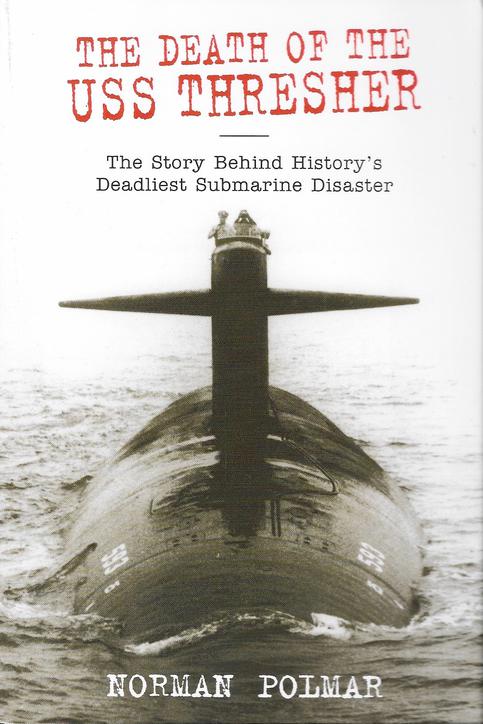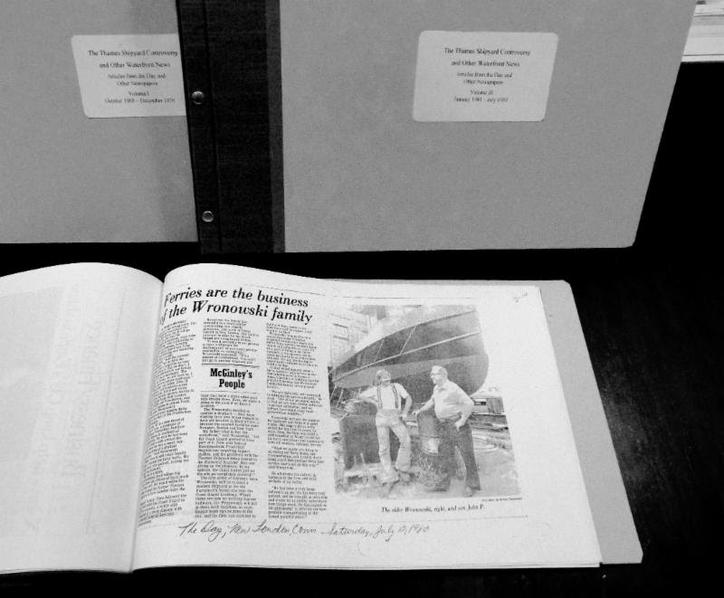May, 2011
The LIGHTHOUSES OF CONNECTICUT is one of a series of books about New England lighthouses by Jeremy d'Entremont, one of the foremost current authorities on this ever-fascinating subject. Jeremy has also edited new editions of the popular books of New England maritime history by the late Edward Rowe Snow, and we are delighted that he will speak at our Sentinels of the Sound symposium in July.
We have been expanding the lighthouse book collection in recent months to support the Maritime Society's new custodianship of New London Light, and in so doing have discovered that our area is unusually rich in lighthouse research material: in addition to the approximately fifty titles now at the Custom House (all available for consultation by calling 860 572-0291 for an appointment), the Public Library of New London has good lighthouse holdings, including many appealing items for children and young adults; the Coast Guard Academy Library complements the two downtown collections with special strength in the history and technology of lighthouses, while the library of the University of Connecticut at Avery Point also owns a number of lighthouse books, as does the G.W. Blunt White Library at Mystic Seaport.
June, 2011
Sara E. Wermiel: LIGHTHOUSES.
New York and London, W. W. Norton & Company, 2006
This handsome work is one of the "visual sourcebooks in architecture, design and engineering" published by the Library of Congress in partnership with Norton. Other volumes feature such structures as barns, theaters, canals and bridges, and all are projects of the Library's Center for Architecture, Design and Engineering, established by a bequest from architect Paul Rudolph, famed former Dean of Yale's School of Art and Architecture. Each volume draws from the vast image collections of the Library of Congress, the largest library in the world and, incidentally, the nation's oldest federal institution.
New London's two lighthouses are here, of course, along with hundreds of others that together comprise a magisterial illustrated survey of the history and design of these American landmarks, from their 18th century origins to the l960s. A feature not found in most lighthouse books is the cross-sections and elevations of towers, lanterns and lenses that elegantly show how lighthouses were put together to fulfill their unique humanitarian purpose.
July, 2011
F. Hopkinson Smith
Caleb West, Master Diver
Francis Hopkinson Smith was a popular author in his day, one of his best known works being Caleb West, Master Diver, first published in 1898, a romantic novel set in the challenging, real-life circumstances of constructing Race Rock Light in the treacherous currents off Fisher's Island. Smith was something of a polymath, being not only a writer but a civil engineer and an artist whose drawings of European scenes were much sought after. With Smith as designer/engineer of Race Rock Light, New London's own "master diver," the uniquely skilled Capt. Thomas A. Scott carried out the actual building of the foundation on the submerged reef, a dangerous project lasting almost seven years. (The lighthouse itself took only nine months.) Ten years after Caleb West, Smith acknowledged Capt. Scott's extraordinary achievement in an adulatory description of his friend and business partner in a volume of character studies called "True American Types," a series published in Boston by the American Unitarian Society. A copy of this scarce item recently acquired by Museum Director Susan Tamulevich now complements our two copies of Smith's novel with their handsome variant bindings.
August, 2011
James Tertius De Kay
A Rage for Glory:
The Life of Commodore Stephen Decatur, USN
One of the most rewarding parts of developing the Frank L. McGuire Maritime Library is to track down books that illuminate New London's rich maritime past. This quest recently yielded A Rage for Glory, local author James Tertius De Kay's biography of Stephen Decatur, the celebrated naval officer who brought two frigates and a sloop into New London harbor in June, 1813, to escape a British squadron of superior strength.
Although the British were denied capture of the American ships, their blockade of New London trapped the ships here for the duration of the War of 1812. Decatur himself was able to leave, took command of another ship, was taken prisoner and repatriated after the war (on a ship that brought him from Bermuda to New London) and became even more famous for his bold actions against the Barbary Pirates. He and his wife retired to a mansion they built near the White House, but enjoyed his celebrity for only fourteen months due to his shocking death in 1820, age 41, in a duel with a rival officer.
Our Library also owns Mr. De Kay's The Battle of Stonington, an account of the attack on the village in August of 1814 under the same Royal Navy captain, Thomas Hardy, who had trapped Decatur's ships in the Thames River the year before.
September 2011
Chandler B. Saint and George A. Krimsky
Making Freedom: The Extraordinary Life of Venture Smith
Middletown: Wesleyan University Press, 2009
The inspiring story of Venture Smith (ca. 1729 - 1805) , a slave who succeeded in buying his freedom (in Stonington, in 1765, where he had lived since 1754) is presented here with instructive, eminently readable commentary and well-chosen illustrations. Our copy is a gift from Archie Chester, a long-time supporter of the Frank L.McGuire Maritime Library. The chief source of Venture's story is the remarkable account of his life he dictated, near its end, to a schoolmaster, first published in 1798 in New London. Not surprisingly, the long, twisting chronology, from enslaved African prince to free, prosperous landowner at Haddam Neck, plays out against a maritime backdrop: the voyage from Africa to Rhode Island by way of Barbados; criss-crossing Long Island Sound over the years between Rhode Island, Fishers Island, Stonington and Long Island; life along the Connecticut River. The more surprising backdrop, however, is the steady reminder that slavery was as ingrained in parts of southern New England as firmly as in the Deep South -- a fact which may not be familiar to some readers -- with the largest concentration of slaves living in New London County. Unlike the South, of course, the "institution" gradually waned here, and we are more likely to think of New England as a complex of stations on the Underground Railroad, by which many slaves escaped to freedom. It is well to remember that even in 1839, when a navy officer brought the slave ship Amistad to New London, he did so because slavery was still legal in the state and he intended to sell the captives.
As it happens, September is Connecticut Freedom Trail month, the annual commemoration of that decades-long effort to help slaves reach freedom in the North and Canada. The term "Underground Railroad" gained currency in the early 1830s as a metaphor of the burgeoning growth of the steam-powered railroads. New London's Custom House, opened in 1833, is one of three New London sites on the Freedom Trail, the others being a grave in Ye Antientest Burying Ground and the Hempsted House and district. Fort Griswold, the whaleship Charles W. Morgan, and the former shipbuilding community of Greenmanville (now preserved at Mystic Seaport) are also on the Trail.
October 2011
Marc Songini
The Lost Fleet -- A Yankee Whaler's Struggle Against the Confederate Navy and Arctic Disaster
New York, St. Martin's Press, 2007
There are travails aplenty in this account of whalers struggling to prosper in a dying industry. The Yankee whaler of the title is Thomas W. Williams of Wethersfield, whose long, lively career is one of the threads of Songini's breezy narrative. Even in the best of times whaling was arduous, dangerous work, with ships and their crews enduring storms in temperate waters or ice in the frigid north. Then came the Civil War, with Confederate raiders raising havoc with Yankee whalers and a Union plan to hinder Confederate shipping by blocking the harbors of Charleston and Savannah with stone-laden ships scuttled at the entrances. A number of whalers lay idle in New England at the start of the war, many of them old and worn out, and against the advice of cooler heads the so-called "Stone Fleet" was cobbled together in New Bedford and New London; government agents bought whaler after whaler, including the Corea, Tenedos, and four other New London-based ships. These were heavily loaded with stone and in November, 1861, sailed southward in a barely seaworthy armada. As it happened, the Stone Fleet was a costly failure, despite its vigorous promotion and preparation, but idea was bold, if flawed, and the New London references will be of interest to local history buffs.
November 2011
Judith Navas Lund
WHALING MASTERS AND WHALING VOYAGES SAILING FROM AMERICAN PORTS: A Compilation of Sources
Published in 2001 in a limited edition of 500 copies by the New Bedford Whaling Museum, Kendall Whaling Museum, and Ten Pound Island Book Company
Our latest library purchase comes on the tenth anniversary of the publication of what Stuart M. Frank, Curator of the New Bedford Museum, called "the most important whaling history desk reference to appear in a generation." Whaling Masters and Whaling Voyages is a list of all known whaling voyages from the late 18th century to the early 20th. Half of the hefty tome lists voyages by name of vessel, and the other half lists them by name of the ship's master.
Each entry includes the name of the "hailing" port, rig of the vessel, years of departure and return, location of logbooks when known, and sources of the data. The logbook locations are an impressive and indispensable feature not found in earlier attempts to document whaling voyages. New London, Mystic and Stonington appear frequently, of course, and Groton, Norwich and Saybrook also turn up now and then.
Judith Lund's painstaking work updates, expands and corrects earlier efforts, notably Alexander Starbuck's History of the American Whale Fishery (also in our library), and Reginald Hegarty's Returns of Whaling Vessels Sailing from American Ports. It also supplants Whaling Masters, a work issued by the Federal Writers Project in 1938, one of the less well known job-creation programs of the Roosevelt Administration. For many years Whaling Masters was the most important list of those intrepid seafarers who were the driving force behind the whaling trade. Judith Lund is former Curator of the New Bedford Whaling Museum. The Kendall Whaling Museum, formerly in Sharon, Massachusetts, has been incorporated into the New Bedford Museum since this book was published.
December 2011
W. Barksdale Maynard
Architecture in the United States 1800-1850
New Haven, Yale University Press, 2002
Notwithstanding the alluring 1838 view of the Schuylkill River and Philadelphia's Fairmount Waterworks on its jacket, one would rightly ask why this book is owned by a maritime library in New London, Connecticut. The answer lies in the photograph on the back, an 1846 view of Robert Mills's great 1840 Greek Revival building for the U.S. Patent Office in Washington. Mills, architect of our 1833 New London Custom House, was important enough in Maynard's narrative to rate more than 40 index references. He was the first professional American-born architect, was mentored by Thomas Jefferson (actually living at Monticello for a time,) and was later responsible for three more prominent capital landmarks, the Washington Monument, the Treasury, and an early post office headquarters. New London's custom house is a restrained example of the architectural style that dominated the first half of l9th century America, although it was being challenged as early as the 1830s, when our Custom House was built: William Ross, an Englishman visiting New York in 1834, observed that "The Greek mania here is at its height, as you may infer from the fact that everything is a Greek temple, from the privies in the back court, through the various grades of prison, theatre, church, custom-house, and state-house." The mania faded, of course, but fortunately for posterity countless examples remain, gracing the nation's streetscapes with their timeless symmetry.
January 2012
Harold M. Hahn
Ships of the American Revolution and their models
Naval Institute Press, Annapolis, 1988
One of the most generous donors to the Frank L. McGuire Maritime Library is Robert Stewart of Mystic, retired engineer and model-maker extraordinaire. His handsome ship models, fitting easily into the shelving, add a distinctly nautical theme to the room. Our shelves also hold well over one hundred books donated by Bob in the past two years, and we have chosen one of them for our January feature: Harold M. Hahn's Ships of the American Revolution and Their Models, published in 1988 by the Naval Institute Press in Annapolis. The book is of interest to more than the fraternity of model builders, however: before discussing the models of seven different ships, the author provides a fascinating account of the history of each, among them the story of the ill-fated frigate Confederacy, built on the Thames at Norwich as part of a program authorized by Congress in 1776 to develop the colonial navy. After much delay due to lack of materials and many administrative problems, the ship was launched in 1778 and towed to New London for fitting out under Capt. Seth Harding. The short career of Confederacy is a litany of misfortune that reads like the synopsis of a historical adventure novel, ending with her capture by the British off Delaware in April, 1781. After initial optimism that she could be converted into a 40-gun ship of the line, the Royal Navy declared that after a close inspection the renamed HMS Confederatewas in fact unfit for service after three tumultuous years afloat. She was, nevertheless, a very handsome ship, as is apparent from the plans that the author reconstructed from the originals in England's National Maritime Museum.
February 2012
W. Jeffrey Bolster
Black Jacks: African American Seamen in the Age of Sail
Cambridge: Harvard University Press, 1997
For Black History Month we present a book dealing with the considerable part played by Black Americans, both slave and free, in the maritime life of the colonies and the new nation that emerged after the Revolution and the War of 1812. The author opens with a moving quotation from Frederick Douglass, a skilled ship caulker in Baltimore who knew a great deal about ships and sailing: "Those beautiful vessels, robed in white, and so delightful to the eyes of freemen, were to me so many shrouded ghosts." Calling them "freedom's swift-winged angels," he swore that one of them would someday bear him to freedom.
A sailor's life at sea in the Age of Sail was harsh, marked by low wages, hard work and extreme discomfort. Many whites, perhaps most, wouldn't consider seafaring, but for slaves and freedmen of a certain bent it represented opportunity. Even with its privations and brutality, a sailor's life was considered preferable to the punishing toil and other horrors common in southern plantation life. Bolster examines all aspects of this fascinating history, noting among other things that 18,000 free blacks saw sea service in the War of 1812, that several generations of black men "partially circumvented the racist norms of American society" in becoming part of the international maritime culture, and that as a result of their travels abroad, black mariners were "central to the process through which early black society constructed and defined itself."
March 2012
Thomas C. Gillmer
Old Ironsides: The Rise, Decline and Resurrection of the USS Constitution
Camden, Maine: International Marine, 1993
New Londoners enjoy a unique link to the frigate USS Constitution, that storied centerpiece of the historic Charlestown Navy Yard. Following one of her several rebuilds, some of the replaced planks were fashioned into the massive doors of the Bank Street Custom House. With this in mind, our book of the month is Thomas Gillmer’s authoritative look at the Constitution's wood structure, from her launch in Boston in 1797 as an exemplar of the finest in American shipbuilding, through two wars of independence, and the two ensuing centuries during which she was almost scrapped several times, rehabilitated as often (and not always in the best way) until she was at last recognized as a priceless national symbol to be preserved at all costs. The author, a former professor of naval architecture at the Naval Academy and an eminent yacht designer, was asked by the Navy in 1991 to study the Constitution and recommend action to ensure her long-term survival. His book is an eminently readable, occasionally feisty, and handsomely illustrated report on the six months he spent on the project. Gillmer found the ship to be a "deteriorating national monument" and was not shy about saying what should be done. Whether those ultimately responsible agreed is perhaps known only to them and to Gillmer. Meanwhile, a Boston website (NorthEnd.com) reported in October, 2009, on the occasion of one of Constitution's famous harbor turn-arounds, that she was undergoing a three-year restoration to prepare for the bicentennial of the War of 1812.
Our copy of Gillmer's book is from the estate of the late Dan Wolverton, a maritime history enthusiast and dedicated long-time proponent of the Custom House Museum.
The family-friendly USS Constitution Museum at Charlestown Navy Yard serves as the "memory" and "educational voice" of the famous ship docked just outside. From time to time it offers programs on other aspects of maritime history as well: through March 24, for example, it is hosting the 33rd annual Model Shipwright Guild Exhibit, sponsored by the Boston Marine Society. The Guild encourages the art of modeling with workshops, activities, and exhibits, while the Boston Marine Society resembles our own New London Maritime Society, telling the story of the port of Boston through its archives, gallery, and outreach programs.
April 2012
Geoff Hunt
The Sea Painter's World: The New Marine Art of Geoff Hunt
London, Conway, 2011
We have long admired the work of Geoff Hunt, one of Britain's foremost marine painters, artist of the covers of Patrick O'Brian's Aubrey-Maturin novels and occasional visitor at Mystic Seaport, which has published some of his prints and one of his books. The new book is a sequel to a similar 2004 work, both volumes presenting examples of his work amplified by his own commentary. We were delighted to find, on the last page, a picture worth the price of the book: an oil entitled "Captain Hardy's Ramillies after the 'Battle of Stonington', August 1814." We see the British squadron after it has stood into the Sound following the bombardment, the sunny skies untroubled by the wispy smoke rising from the distant shore. Hunt has painted several 18th and 19th century American subjects, but this is the first we have come across depicting a historical scene so close to home. A photo of a model of HMS Ramillies, and photocopies of several naval reports written aboard her, are part of our Robert Bachman Archive on the War of 1812.
Here at the Frank McGuire Library our interest in marine art is focused on a subset of the genre in which artists document or re-imagine places and events in history. Probably the best known American practitioner of documentary marine art is John Stobart: both of his impressive large-format books are in our collection and, as it happens, one of these, American Maritime Paintings of John Stobart, was acquired some years ago by our founder, the late Lucille Showalter, in memory of Attorney Frank L. McGuire.
BOOK OF THE MONTH
Selected and reviewed by Brian Rogers, Librarian
2018
Click HERE to read more Book-of-the-Month reviews.
May 2011 through November 2016, below. read additional Book of the Month selections HERE.
January 2018
Eloise Engle and Arnold S. Lott
AMERICA’S MARITIME HERITAGE
Annapolis, Naval Institute Press, 1972
In this eminently readable book the authors wanted to supplement history textbooks with a specialized work threading all things maritime through the story of America, from the colonial era to the early 1970s as the bicentennial commemorations drew near. An encyclopedic introduction to a sprawling subject, it concisely describes everything from colonial seaports to piracy and slavery, from the art of navigation to inland waterways, to cultural and technical topics such as literature, band music, ship models, naval combat art, radar, loran, and underwater sound. Among the links to New London and Groton is a reference to the 1834 rebuild of the U.S.S. Constitution, after which some of her salvaged timbers were fashioned into the sturdy doors for the Custom House then under construction; an illustrated account of the Savannah, the first ship to cross the Atlantic using steam power (if only for three days) under New London’s Capt. Moses Rogers; a short account of John Ledyard’s efforts to promote fur trade with China; the rise and decline of whaling; mention of Eugene O’Neill shipping out on tramp steamers and the influence of the sea on his playwriting; and the trial runs of the submarine Nautilus in 1955.
This book is one of many nautical titles recently given by John Belbruno in honor of Vincentia (Vinnie) Belbruno.
February-March 2018
Alex Roland, W.Jeffrey Bolster and Alexander Keyssar
THE WAY OF THE SHIP
America's Maritime History Re-envisioned 1600-2000
Hoboken, John Wiley & Sons, 2008
This book joins the bibliography of a topic familiar to the few, largely unknown to the many. Awareness of maritime history has resided largely in our ports and along our coastlines, but always stood in the background of national economic and political life. Since the millennium it has loomed ever larger in our collective consciousness as we navigate the unsettled waters of globalized economics and consumerism. From the containership revolution to trade imbalances, from the arrival of the megaship to the expansion of port infrastructure in reaction to the new Panama Canal - public awareness of merchant shipping is arguably greater than at any time since World War II. And on top of this we are witnessing the phenomenal growth of the cruise industry. It's a complex story with many strands, and in the decade since this book was published we may assume it already needs updating.
April 2018
Norman Polmar
THE DEATH OF THE USS THRESHER
Guilford, Conn., The Lyons Press, 2004
(First published in 1964)
Fifty-five years ago this month, in 1963, the nuclear submarine Thresher went to the bottom of the Atlantic off the New England cost. It was a tragedy of unimaginable proportions for the families of the 129 men who perished, to say nothing of the men themselves. We have chosen this book to honor the memory of the men and the loved ones they left behind at Groton, Connecticut, her homeport, and Portsmouth, New Hampshire, where she was launched iony two years before. This book, and John Bentley’s “The Thresher Disaster,” are two important accounts in our library that preserve the story for posterity. The website of the Submarine Force Museum states in a 2013 article, “It is impossible to know how many lives have been saved by changes that were made after Thresher’s loss, just as it is impossible to know exactly what happened on board the boat that spring morning. But it is safe to say that submariners are safer now because of the sacrifice that was made by their shipmates a half century ago.”
May 2018
John Laurence Busch
STEAM COFFIN
Captain Moses Rogers and the Steamship
Savannah Break the Barrier
[New Canaan, Conn.], Hodos Historia, 2010
Our selection celebrates the author's lecture at the Custom House this month. The Library's signed copy was acquired when Mr. Busch spoke here several years ago about the Savannah, the first ship to cross the Atlantic Ocean using steam power. The saga of this hybrid vessel has unusual significance for us: Moses Rogers was a New Londoner as was the ship's sailing master, his cousin Stevens Rogers, and they recruited a few New Londoners for their crew. While some historians downplay the importance of Savannah's voyage because the engine was only fired up for three or four days of the crossing, that didn't deter President Franklin Roosevelt from proclaiming May 22 as National Maritime Day in 1933, the 114th anniversary of Savannah's 1819 departure for Europe. The first observance of Maritime Day took place in New London at the impressive Cedar Grove gravestone of Stevens Rogers. He had returned to New London from Georgia, outlived his illustrious cousin, briefly served as customs collector, and related the Savannah story firsthand to Frances Manwaring Caulkins, then hard at work on her History of New London, Connecticut.
June 2018
Frank L. McGuire Maritime Library
ALBUM OF WATERFRONT NEWS STORIES 1968 - 1984
New London Maritime Society, 2018
Our conservator, Eugene MacMullan, recently converted a stack of several hundred photocopied newspaper clippings into a useful local history resource. Some years ago a friend of the Maritime Society carefully photocopied every waterfront story published in The Day and other news outlets from 1968 to 1984, using 11x14-inch paper that could accommodate long columns and large photos. These clippings comprise a remarkable record of New London waterfront news for those sixteen years, but they were were awkward to handle. To make the collection convenient to use, Gene arranged the pages in three handsomely crafted albums and compiled an index of their contents. The most prominent subject is the years-long "contest" between the Wronowski family, operators of Thames Shipyard, and the Coast Guard, which owned the shipyard property adjacent to the Academy grounds and wanted to expand onto it. The David-and-Goliath standoff ended after the Coast Guard changed its plans, allowing the Wronowskis (after some other hurdles) to purchase the historic shipyard they had leased for years. Other news in these pages includes a dispute over Shaw's Cove, ferry services, shipping at State Pier, New London redevelopment, the controversial proposal to build a bridge linking eastern Connecticut with Long Island, and much else of local interest.
July-August 2018
National Maritime Historical Society
SEA HISTORY MAGAZINE
Peekskill, NY
Since 1972 the National Maritime Historical Society has published Sea History magazine in its mission to educate Americans, younger generations in particular, about maritime history and its relevance today. It's beautifully produced and covers a huge range of maritime topics from early times to the present. Like many magazine it has been digitized, and the most recent eight issues are available through the Society's website. (The restriction is intended to induce readers to join!) We show the Winter 1995-96 issue because it featured three articles about tugboats -- including a short one on tugboat art -- which relates nicely to the ongoing Art of the Tugboat show at the Custom House. Here's yet another way we benefit from digitized history, and while reading Sea History online is not quit as enjoyable as reading it in print, having it all there at one's fingertips can be extremely convenient for researchers.
September 2018
Eric Jay Dolin
BLACK FLAGS, BLUE WATERS
The Epic History of America's Most Notorious Pirates
New York, Liveright Publishing Corporation, 2018
We welcomed Eric Dolin back to the Museum on September 16th, the day before his new book was published. As with his visit two years ago to discuss Brilliant Beacons, a history of lighthouses, he gave a well illustrated talk followed by an entertaining Q&A. The new book focuses on piracy's so-called "Golden Age," from the late 17th to the early 18th centuries, and features famous pirates such as Blackbeard and Captain Kidd as well as lesser known figures. It also describes the efforts of colonial leaders, among them New London founder John Winthrop the Younger's father, and young Benjamin Franklin, to fight and eliminate the scourge of piracy. A good read.
October--November 2018
Christopher Wigren
CONNECTICUT ARCHITECTURE
Middletown, Wesleyan University Press, 2018
Subtitled “Stories of 100 Places,” the subjects of this attractive book range from the expected churches and historic houses to the delightfully unexpected: the Up-and-Down sawmill in Ledyard, the Seaside in Waterford, a poultry barn in Lebanon. Why have we added an architecture book to a maritime collection? Because our Custom House, Harbor Light, and Ledge Light, among other New London buildings, are among the chosen hundred places. The author is deputy director of the Connecticut Trust for Historic Preservation.
Cross Sound Ferry Services, Inc.
CROSS SOUND LIGHTHOUSE CRUISE GUIDE
New London, no date
We end the year with a recent guidebook to the landmarks seen on Cross Sound Ferry's "Lights and Sights" cruises. The "Lights" include the three sentinels managed by the New London Maritime Society (Harbor Light, Ledge Light, and Race Rock) plus six others: Avery Point, North Dumpling, Morgan Point, Latimer Reef, Watch Hill, and Little Gull. The "Sights" include Forts Griswold and Trumbull, and Fort Wright on Fishers Island. Two architectural subjects fill out the itinerary: the Ocean House at Watch Hill and Simmons "Castle," the turreted stone mansion at the east end of Fishers Island that looks like it had been transplanted from Old Quebec. While the booklet is enhanced by superb photography, its special value lies in well wrought descriptions of the local lights and forts by maritime historian and Navy veteran Ted Webb, drawn from sixteen years of narrating lighthouse tours. Interesting factual information is enlivened by intriguing details, superior photography, and even a map. Ted grew up around these lights, maintains friendships with many who served on them, and is committed to their preservation. We are honored that he accepted an invitation last year to join our Board, offering valuable experience and insights to the Society's stewardship of three local lighthouses.

